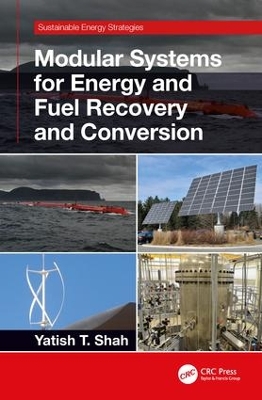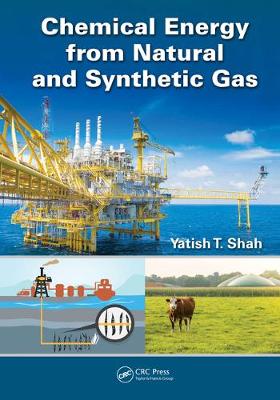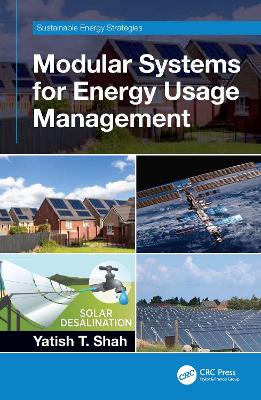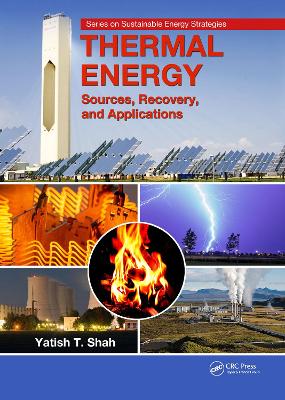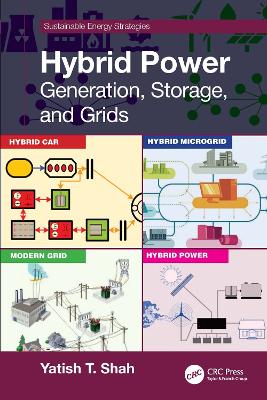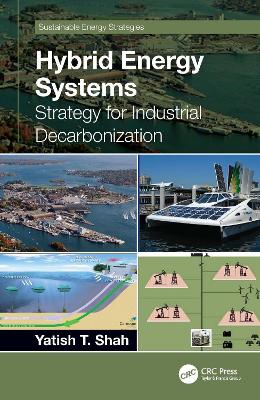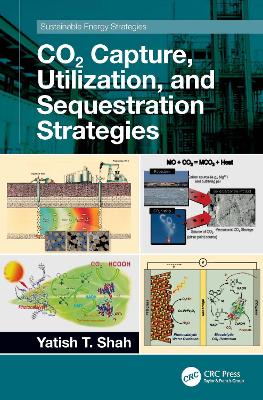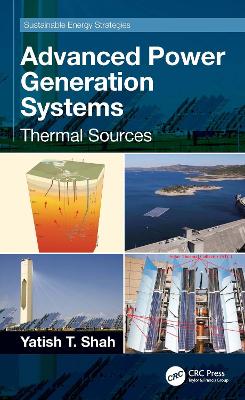Sustainable Energy Strategies
8 total works
Modular Systems for Energy and Fuel Recovery and Conversion
by Yatish T. Shah
Modular Systems for Energy and Fuel Recovery and Conversion surveys the benefits of the modular approach in the front end of the energy industry. The book also outlines strategies for managing modular approaches for fossil, renewable, and nuclear energy resource recovery and conversion with the help of successful industrial examples. The book points out that while the modular approach is most applicable for distributed and small-scale energy systems, it is also often used for parts of large-scale centralized systems.
With the help of successful industrial examples of modular approaches for energy and fuel recovery and conversion, the book points out the need for more balance between large-scale centralized systems and small-scale distributed systems to serve the energy needs of rural and isolated communities. Coal, oil, natural gas, hydrogen, biomass, waste, nuclear, geothermal solar, wind, and hydro energy are examined, showing that modular operations are very successfully used in all these components of the energy industry.
Aimed at academic researchers and industry professionals, this book provides successful examples and analysis of the modular operation for energy and fuel recovery and conversion. It is also a reference for those who are engaged in the development of modular systems for energy and fuel recovery and conversion.
Commercial development of energy from renewables and nuclear is critical to long-term industry and environmental goals. However, it will take time for them to economically compete with existing fossil fuel energy resources and their infrastructures. Gas fuels play an important role during and beyond this transition away from fossil fuel dominance to a balanced approach to fossil, nuclear, and renewable energies. Chemical Energy from Natural and Synthetic Gas illustrates this point by examining the many roles of natural and synthetic gas in the energy and fuel industry, addressing it as both a "transition" and "end game" fuel. The book describes various types of gaseous fuels and how are they are recovered, purified, and converted to liquid fuels and electricity generation and used for other static and mobile applications. It emphasizes methane, syngas, and hydrogen as fuels, although other volatile hydrocarbons are considered. It also covers storage and transportation infrastructure for natural gas and hydrogen and methods and processes for cleaning and reforming synthetic gas. The book also deals applications, such as the use of natural gas in power production in power plants, engines, turbines, and vehicle needs.
- Presents a unified and collective look at gas in the energy and fuel industry, addressing it as both a "transition" and "end game" fuel.
- Emphasizes methane, syngas, and hydrogen as fuels.
- Covers gas storage and transport infrastructure.
- Discusses thermal gasification, gas reforming, processing, purification and upgrading.
- Describes biogas and bio-hydrogen production.
- Deals with the use of natural gas in power production in power plants, engines, turbines, and vehicle needs.
"...[a] very unique book that integrates benefits of modular systems for enhanced sustainability to meet the global challenges of rapid and sometimes uncontrolled industrialization in the 21st century."-Pinakin Patel, T2M Global
This book examines the role of the modular approach for the back end of the energy industry-energy usage management. It outlines the use of modular approaches for the processes used to improve energy conservation and efficiency, which are preludes to the prudent use of energy.
Since energy consumption is conventionally broken down into four sectors-residential, transportation, industrial, and commercial-the discussions on energy usage management are also broken down into these four sectors in the book. The book examines the use of modular systems for five application areas that cover the sectors described above: buildings, vehicles, computers and electrical/electronic products, district heating, and wastewater treatment and desalination. This book also discusses the use of a modular approach for energy storage and transportation. Finally, it describes how the modular approach facilitates bottom-up, top-down, and hybrid simulation and modeling of the energy systems from various scientific and socioeconomic perspectives. Aimed at industry professionals and researchers involved in the energy industry, this book illustrates in detail, with the help of concrete industrial examples, how a modular approach can facilitate management of energy usage.
The book details sources of thermal energy, methods of capture, and applications. It describes the basics of thermal energy, including measuring thermal energy, laws of thermodynamics that govern its use and transformation, modes of thermal energy, conventional processes, devices and materials, and the methods by which it is transferred. It covers 8 sources of thermal energy: combustion, fusion (solar) fission (nuclear), geothermal, microwave, plasma, waste heat, and thermal energy storage. In each case, the methods of production and capture and its uses are described in detail. It also discusses novel processes and devices used to improve transfer and transformation processes.
Hybrid energy systems integrate multiple sources of power generation, storage, and transport mechanisms and can facilitate increased usage of cleaner, renewable, and more efficient energy sources. Hybrid Power: Generation, Storage, and Grids discusses hybrid energy systems from fundamentals through applications and discusses generation, storage, and grids.
- Highlights fundamentals and applications of hybrid energy storage
- Discusses use in hybrid and electric vehicles and home energy needs
- Discusses issues related to hybrid renewable energy systems connected to the utility grid
- Describes the usefulness of hybrid microgrids and various forms of off-grid energy such as mini-grids, nanogrids, and stand-alone systems
- Covers the use of hybrid renewable energy systems for rural electrification around the world
- Discusses various forms and applications of hybrid energy systems, hybrid energy storage, hybrid microgrids, and hybrid off-grid energy systems
- Details simulation and optimization of hybrid renewable energy systems
This book is aimed at advanced students and researchers in academia, government, and industry, seeking a comprehensive overview of the basics, technologies, and applications of hybrid energy systems.
Hybrid Energy Systems: Strategy for Industrial Decarbonization demonstrates how hybrid energy and processes can decarbonize energy industry needs for power and heating and cooling. It describes the role of hybrid energy and processes in nine major industry sectors and discusses how hybrid energy can offer sustainable solutions in each.
- Introduces the basics and examples of hybrid energy systems
- Examines hybrid energy and processes in coal, oil and gas, nuclear, building, vehicle, manufacturing and industrial processes, computing and portable electronic, district heating and cooling, and water sectors
- Shows that hybrid processes can improve efficiency and that hybrid energy can effectively insert renewable fuels in the energy industry
- Serves as a companion text to the author's book Hybrid Power: Generation, Storage, and Grids
Written for advanced students, researchers, and industry professionals involved in energy-related processes and plants, this book offers latest research and practical strategies for application of the innovative field of hybrid energy.
Offering practical treatment strategies for CO2 emission generated from various energy-related sources, CO2 Capture, Utilization, and Sequestration Strategies emphasizes carbon capture, utilization, and sequestration (CCUS) with special focus on methods for each component of the strategy. While other books mostly focus on CCS strategy for CO2, this book details the technologies available for utilization of CO2, showing how it can be a valuable renewable source for chemicals, materials, fuels, and power instead of a waste material damaging the environment.
- Highlights current and potential future commercially viable CCUS strategies
- Discusses applications for direct and the more complex indirect utilization of CO2 streams
- Examines viability of the mineral carbonation process and biological treatments to convert CO2 into useful biochemicals, biomaterials, and biofuels
- Explores heterogeneous catalysis for thermal and electrochemical conversion and solar energy-based thermal, photo-thermal, and photocatalytic conversion of CO2
- Presents the rapidly growing concept of plasma-activated catalysis for CO2 conversion
CO2 Capture, Utilization, and Sequestration Strategies is a valuable reference for researchers in academia, industry, and government organizations seeking a guide to effective CCUS processes, technologies, and applications.
Advanced Power Generation Systems: Thermal Sources evaluates advances made in heat-to-power technologies for conventional combustion heat and nuclear heat, along with natural sources of geothermal, solar, and waste heat generated from the use of different sources. These advances will render the landscape of power generation significantly different in just a few decades, and the book covers the commercial viability of advanced technologies and identifies where more work needs to be done. Since power is the future of energy, these technologies will remain sustainable over a long period of time.
• Covers power generation and heat engines
• Details photovoltaics, thermo-photovoltaics, and thermoelectricity
• Includes discussion of nuclear and renewable energy, as well as waste heat
The book will be useful for advanced students, researchers, and professionals interested in power generation and energy industries.
